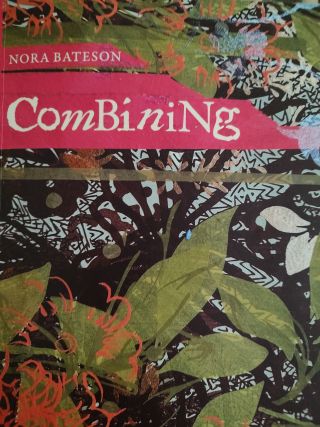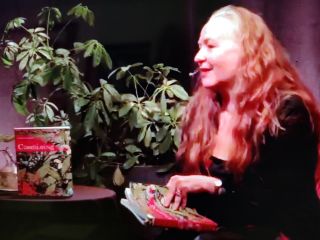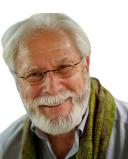Relationships
A Book Review of Nora Bateson’s “Combining”
How possibilities bring things together.
Posted November 22, 2023 Reviewed by Kaja Perina
It is not that there is no wish to meet the deeper needs – it is that healing cannot be divided or measured by department. The confusion is compounding. (from Nora Bateson’s poem, "Hallway of Hallways")
In the mid-seventies, I applied to the interdisciplinary department of Family and Community Studies doctoral program at Columbia University, intentionally submitting a poem in lieu of the formal application at the suggestion of the beat poet Allen Ginsberg. My soon-to-be mentor Paul Byers, (who had a working relationship with Margaret Mead and Gregory Bateson) convinced admissions not to pass on me while my application was “not familiar" he urged them to accept me on probation.
My eventual dissertation committee, representing different disciplines, described my research of how Double Binds stifled educational and political reform as challenging and "unfamiliar to us, but profound.” This is where I would like to begin my review of Nora Bateson's brilliant book Combining, (Triarchy Press, 2023) about the need for communication that is ecological and fosters possibilities.

To start with, Nora believes that "The familiar is not the only way."
She uses stories and artistic examples to explain how all the contexts in our world are simultaneously interdependent. This includes not being compelled to answer "about" this situation or another in isolation from the other contexts that make up our world.
Instead of using labels and fragmented descriptions, she intertwines poetry, art, and wisdom which are interspersed throughout this fascinating, excitingly designed book. It was a mesmerizing experience to read and savor it. You could, if you like, start anywhere in this book. It is like visiting a meadow, where your senses will have the opportunity to understand the importance of the minutiae that inhabits it.
This journey will undoubtedly help you understand the value of combining our relationships across all contexts that touch our lives. Building on the works of her father, anthropologist Gregory Bateson, and grandfather biologist William Bateson, she masterfully proves the adage that “the map is not the territory.” Nora weaves improvisational gems that celebrate the relationships within and between all the parts of our world. She succeeds in enlightening the reader to pay heed to the multitude of existing distinct ecological contexts in search of connecting.
She makes the case for the need to have a communication ecology. In pursuing this, Nora paints a description of imposing categories and compartmentalization has produced division and fragmentation among family, media, and education. Upon reading Nora’s explanation, you immediately grasp the injurious consequences of this paradigm. She convincingly traces where the origin lies regarding our contemporary social/cultural problems. "...comparing nature to a machine makes it possible to see in nature a fragmented collaboration toward an outcome. This, in turn, begins to justify competition, war, and individualism. Whereas if the side-by-side-ing places family, ecology, and economy next to each other, what starts to happen is that the deeper plans of story reframe into an understanding of what is non-trivial, profound, and vital."
Nothing Is Hidden, But Much Is Unseen
Nora believes that there is always a way to share our intimacy. She proposes an ecological question " Who can you be when you are with me?" She writes: "Hope lies in the very fact that as living beings we are wired for relationships. It is only possible to express our humanity in relationship to other human beings." She describes other ways of looking through the lens of ecology. "The meadow is where I am reminded of the edges of my perception and challenge the trickery of my well-worn inclinations." Her way of making sense when being in nature is to, “… practice thinking like an ecology there. I am studying the ways of it, wondering; how do things stay the same while they change? "
She shows that "what is learned in one context actually becomes a description of another." It is the simultaneous implication that depicts how ecological movements cannot be unchanging. What emerges from this is the constant searching for " a difference that makes a difference," which is the driving force of our evolution.
"The concept of ecology cannot be a parking space or static definition of interdependency. No, that is not enough. The organisms in my meadow and the shark in the ocean are both shaping and being shaped by the other organisms they live with, who are also shaping and being shaped." Each context that makes up our lives informs each other, constantly adding information, providing new skills, and ongoingly redefining e.g. how the family as well as each member will benefit and evolve from health providers, environmental pressures, economic changes, schooling, etc., and vice versa. As her father said, "Life keeps life-ing." She reminds us that nothing is hidden but much is unseen. It will emerge with patience and mutual learning.
What Does It Mean to Be Transcontextual?
A major pattern in this process of communicating ecologically is how each context is simultaneously part of a multitude of wider contexts or transcontextual. “This term refers to the ways in which multiple contexts come together to form complex systems. It allows for a concentration on the interdependency between contexts that give resilience to both living and non-living systems.” Not being aware of this natural process will create double binds, which are like being between a rock and a hard place. For example, allowing a child to develop with input from the many contexts that make up her life can avoid labels that will create a self-fulfilling prophecy of not attaining one's potential. Without a "jump in perception" to a wider all-encompassing ecological view the consequences are stifling.
Nora quotes Gregory, as he was fond of saying "A falling leaf is not just that and nothing more, things are implicit in other ways.” In response, she has nurtured what she calls "warm data.” It is defined as: "Transcontextual information about the interrelationships that integrate a complex system." She also coined the word "symmathesy" which is “to generate mutual learning contexts through the process of interaction between multiple variables in a living entity.”
In thinking about applying these terms, we can look at, for example, problems in the education system by following how the child is involved across other interrelated contexts of family, classroom, media, environment, and so on. Again, a meadow is only a meadow through the different forms of communication between its organisms and their relationships within that context.
This is what gives insights from what can emerge by asking "What are my hypotheses telling me about the pre-existing patterns of thought - influenced by culture, education, and economy…” With mutual learning, Nora advocates that "what is important is not what has been said. It is what is possible to say - and that is guarded by the implicit messages inherent in the relationship."

Nora poetically allows us to be side by side with other interdependent contexts. Her prose generates a "stochastic stitchery" of randomness and improvisational movement which she describes as "Aphanipoiesis ...how life coalesces toward vitality in unseen ways.”
This is driven by creating a flexible non-linear sense of "ready-ing" and a commitment to experiencing how "your story changes my story." Mutuality is enhanced by a " zooming in and out view” all at once, which is the simultaneous perception that underpins ecology and systemic understanding.
In this way, it is better understood when things are interconnected that they should not be taken apart "fiddled with, fixed or replaced," or as Nora so exquisitely remarks " you can't take the grapes out of the wine" Her neologisms, to some degree, are driven by the need to say what we have not said before and make up new words,” lots of them to learn from each other.”
Nora Bateson offers hope and forewarning by asserting how important it is to look for where we place ourselves at the "edge" of an other. How do we try to solve the consequences of decontextualization? We cannot find it in linear or familiar ways. It is working through inevitable double binds with imagination to rise above the familiar. She encourages and believes it is okay to be “weird” because familiarity is dangerous and possibilities create differences that make a difference.
This book is a long overdue release of the intrinsic energy of being human. It gives us territorial guidance beyond any map that offers a recipe for change.




